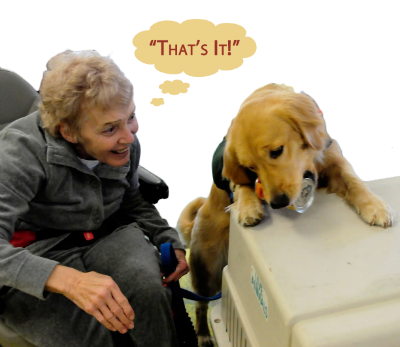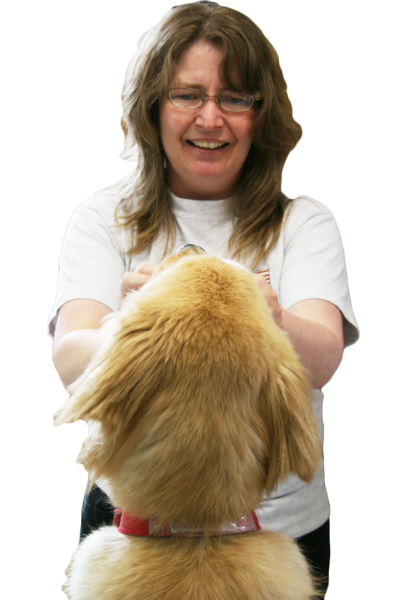
Indicators are similar. They are words utilized to provide motivation and support to your dog. Markers, inspiration, and reinforcement are crucial tools to fun and prosperous teaching.
There are three Indicators: “Yes, ” “No, ” and “That’s It. ”
“That’s It” is a motivational tool used to communicate confidence.
Motivation is the amount of power needed to complete a task.
Level of Motivation: The level of motivation is usually specific to each canine and task.
- Too much inspiration and your dog will be diverted. (Figure 1)
- Too little inspiration and your dog will not be serious. (Figure 2)
Marker 1:
“That’s It”

When to use - Whenever your dog is attempting to the actual command correctly.
The indicators “Yes” and “No” are usually reinforcement tools that verbally communicate positive and bad reinforcement.
Reinforcement is what you are doing WHILE the behavior is happening.
Optimistic Reinforcement happens while the actions are occurring to make it rewarding.
“That’s It” motivates your dog to help keep trying. Say it along with enthusiasm and a smile! (Warm…warmer).
When to use - Whenever your dog is attempting to the actual command correctly.
The indicators “Yes” and “No” are usually reinforcement tools that verbally communicate positive and bad reinforcement.
Reinforcement is what you are doing WHILE the behavior is happening.
Positive Reinforcement happens while the actions are occurring to make it rewarding.
Marker 2:
“Yes”
“Yes” marks the actual moment of appropriate habits by telling your dog “You’re Right! ” (Hot!).
When to use - Each time your dog performs the order correctly. “Yes” is a spectacular and excited marker constantly given with a smile! Tend not to drag it out or even make it singsong like an issue (“Yeesssss?!? ”)
You are observing and imprinting the moment for the dog. You do not want to depart any question in their brain.
Example: You give the order to sit. At the specific moment your dog’s rump touches the ground. you state “YES! ” and grin! (Figure 4)
Negative Reinforcement while the behavior is taking place to make it unpleasant.
Marker three or more:
Marker 3:

“No” marks the actual moment your dog is performing inappropriately. It means “Stop today. ” (Cold! ).
Whenever to use - You must capture your dog in the act to be able to stop the behavior. The “NO! ” must be stern, noisy, and no non-sense. Do not move it out or ensure it is singsong like a question (Noooo?!? ). You are marking plus imprinting the moment for your canine, just like with “Yes. ” (Figure 6)
How do you understand your dog interpreted the positive or even negative reinforcement the way you designed?
If the behavior continues, your puppy received a positive reinforcement, even though you said, “No. ”
When the behavior stops, your dog obtained a negative reinforcement, even if you mentioned, “Yes. ”
Rules of Reinforcement
Illustration: Your pup was peeing on the floor and since you are not there, you cannot influence the behaviour.
Timing: You have from zero to 3 seconds in order to influence the behavior RIGHT NOW, therefore reward good behavior, or even interrupt wrong behavior plus redirect.
Example: Your puppy is peeing on the floor. Tend not to wait until they are completed. Instead, interrupt the puppy and move him/her outdoors to finish peeing.
Degree: When the behavior did not stop, their education was not dramatic enough.
Illustration: Yell and wave both hands. The drama will cause the particular pup to stop peeing lengthy enough for you to scoop them upward and relocate them outdoors to finish peeing.
Redirection: A suitable redirection ends with an optimistic behavior. It never finishes with a negative.
Example: A person redirected your pup to complete peeing outside, now finish on a positive with a “YES! ” and even treats, considering that reinforcing the behavior of peeing outside is what you want.


0 comments:
Post a Comment